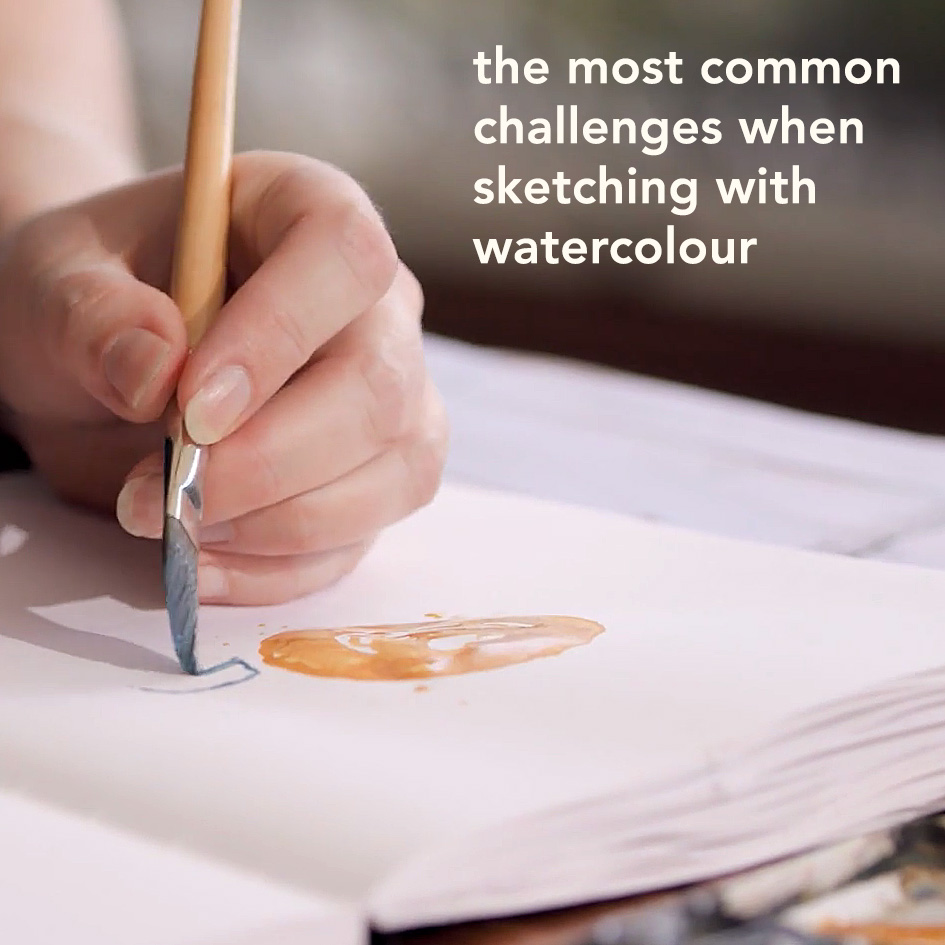
A few weeks ago I asked on Instagram and my blog for people to share the main challenges they face when sketching with watercolour.
I loved going through all the responses and there was a clear winner! The next three challenges also stood out from the rest and all four struggles are things that I specifically address inside my Watercolour course which we’ll be going through starting next week.
So here are the four most common challenges when sketching with watercolour…
1. How to control the water!
I’m not at all surprised by this as it’s the most essential skill to develop when doing any painting with watercolour. But it’s even more important when you go out on location sketching with watercolour because the outside conditions can change and there are more distractions.
And so this is why I’ve devoted a whole week to this topic in my Watercolour course. 🙂
To control the water while you are sketching with watercolour you have to understand:
- how pigment in water behaves
- how to use the right amount of water (and pigments) when you are mixing washes in your palette
- how to control the water in your brush
- how to be aware of the water on (or within) your paper and make the right decisions about when to apply new washes
- how all of your paints behave slightly differently and the better you know them the easier it is to create the best mixes.
These are all things that we look at in Watercolour Lesson 1!
And then we use the skills we develop in the first week for the rest of the course, especially when we start layering and working wet-in-wet.
I explain the important principles of how water behaves by using diagrams and small demos and then have designed a few specific exercises so that you’ll start controlling the water and get to know your paints better.
Here are a few images showing you some of the things we explore in Lesson 1…
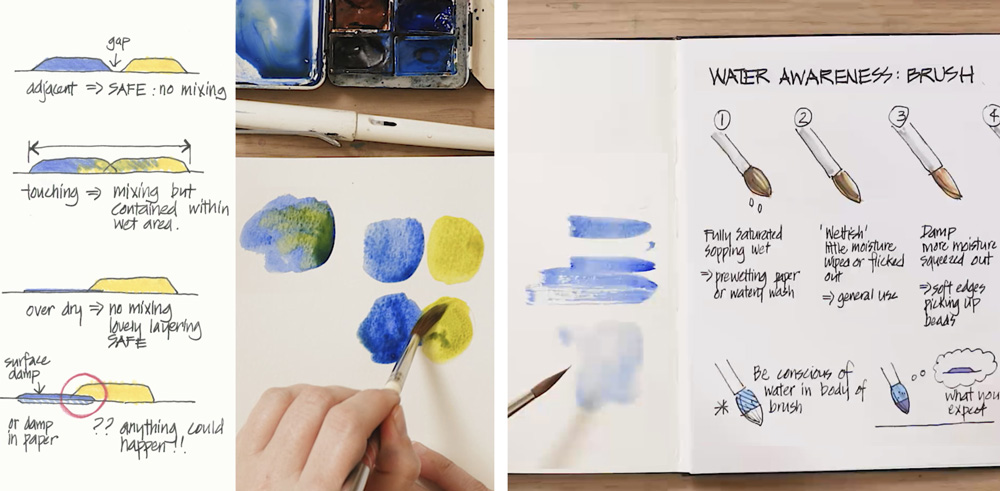
Controlling the water in our mixing wells, in our brush and on the page.
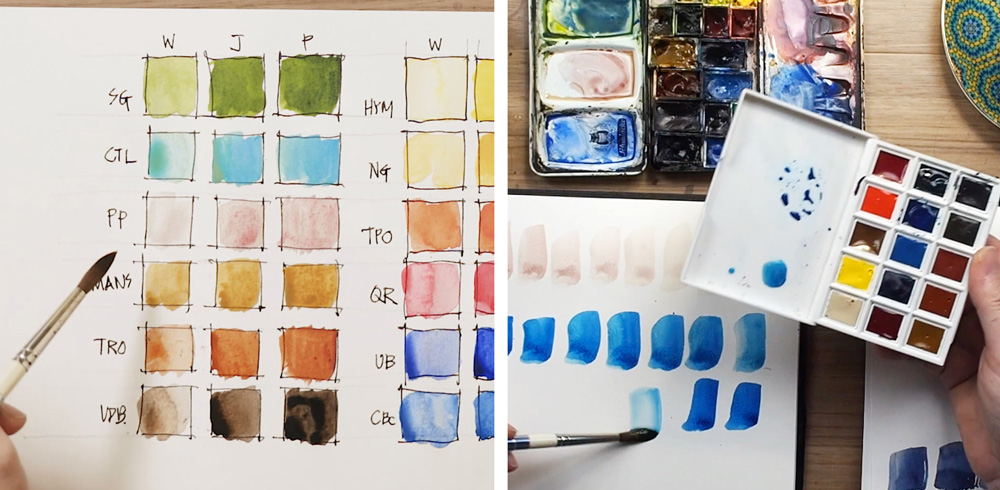
Mixing watery, juicy, and pasty washes and getting to know our paints better.
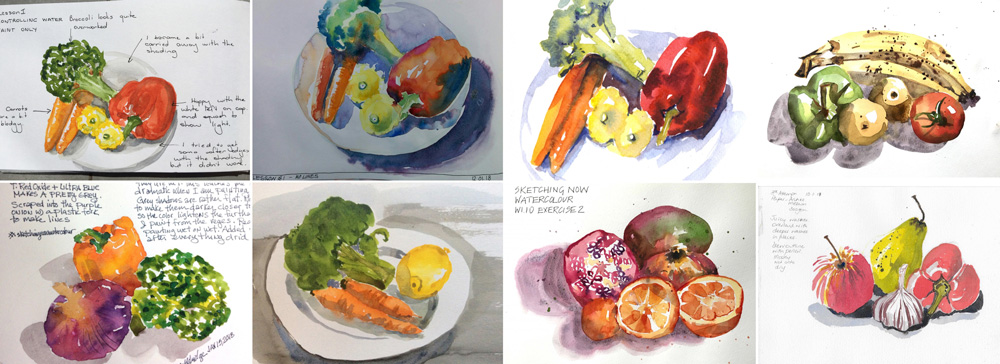
And here are a few examples from the classroom showing the main exercise for the first lesson.
I encourage participants, if they feel confident enough, to paint fruit and vegetables of their own choice so that they learn to apply the principles to their own subjects and style of sketching.
2. Choosing and mixing colours
Many beginner urban sketchers fall into the trap of putting too many different colours (hues) into their palettes. They get fixated on mixing exact colour matches, forgetting the bigger picture.
In Watercolour I share a curated 12-colour palette, refined through years of experience. This palette is perfect for urban sketching as all the paints work together harmoniously. They are great mixers but can also be used on their own! They represent a range of different pigment types so they create a variety of ‘pigment parties’!
This palette will jumpstart your watercolour journey and can be customized later as you gain confidence.
You’ll learn practical guidelines for using colour and I also share my Master Palette concept which makes mixing colours on location dramatically easier. This exercise is always a class favourite!
3. Creating sketches with good shadows and a range of values
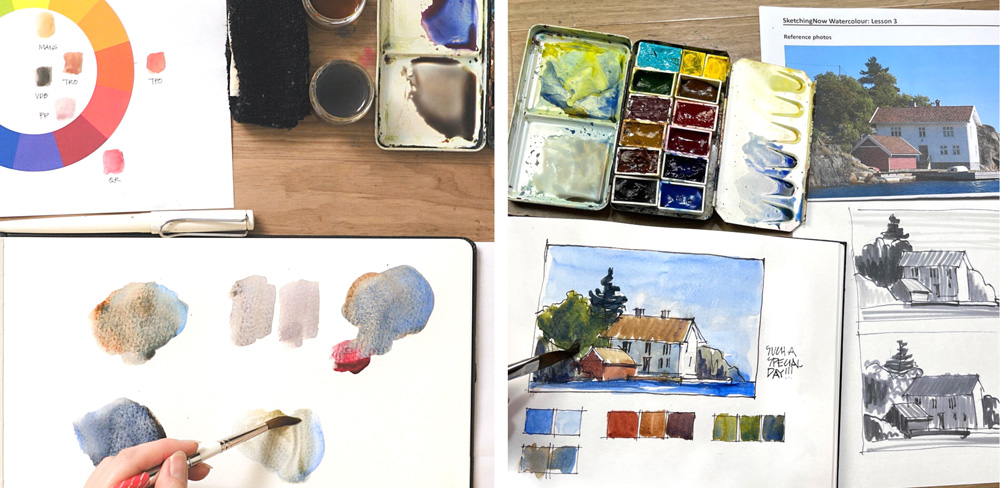
The most important aspect of colour is value (the lightness or darkness of a colour) and this forms a big part of the second half of the Watercolour course.
Once again I’ve specifically designed a few exercises to help you understand how to see colour as value and how to think about it before picking up your brush. You’ll no longer worry about mixing the right colour and instead, you’ll consider values and create sketches with impactful contrast.
As for ‘good shadows’ I’m somewhat obsessed with creating shadow washes with incredible watercolour magic and have lots to share on this topic!
4. Leaving whites
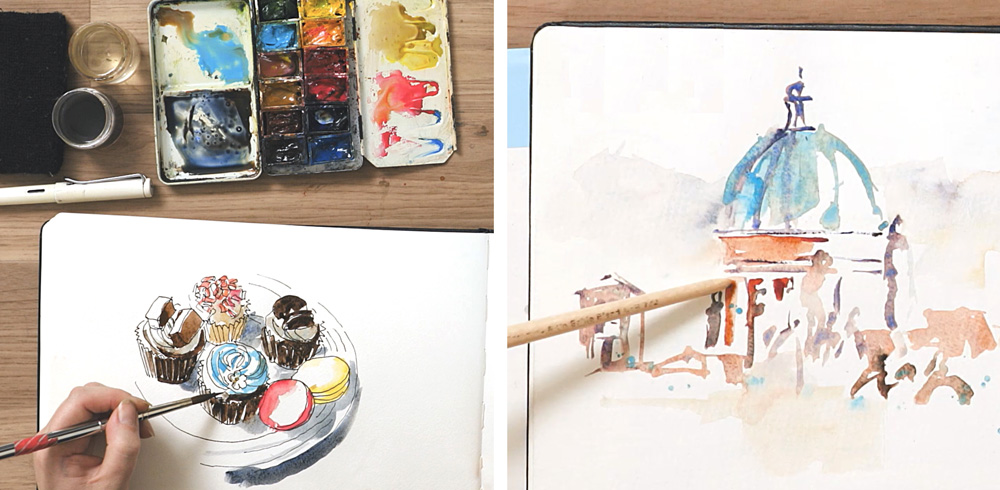
Since watercolour is transparent, white areas (or light values) are best left as untouched paper. But preserving them can be tricky!
Watercolour Lesson 4 reveals my top tip for preserving white… drum roll please… start with the darks!
This technique flips traditional watercolour (light to dark) on its head, making it perfect for lively urban sketching. It’s faster (less painting!), preserves white effortlessly, and leads to strong values.
Do you relate to any of these challenges?
Let me know in the comment section below.
(If you are reading this via email, please click on the article title link below and add a comment on my blog. Thanks!)
And finally…
Just a reminder that the Live Version of my Watercolour course starts next week – it’s a chance to work through the course with an inspiring cohort of sketchers from around the world. I’m hosting 7 weekly bonus livestreams as well. It might be 2 years before I again host such an interactive group event for my Watercolour course so this is a big deal! 🙂
I’m super excited to be going through these Watercolour concepts again and if it’s a good fit for you I would love to see you in the cohort. Find out more here!
Note: If you have purchased the Watercolour course at any time you can be part of this Live Version for free! Simply go to the Watercolour classroom via sketchingnow.com – My Account – My Courses and follow the instructions on the course homepage.

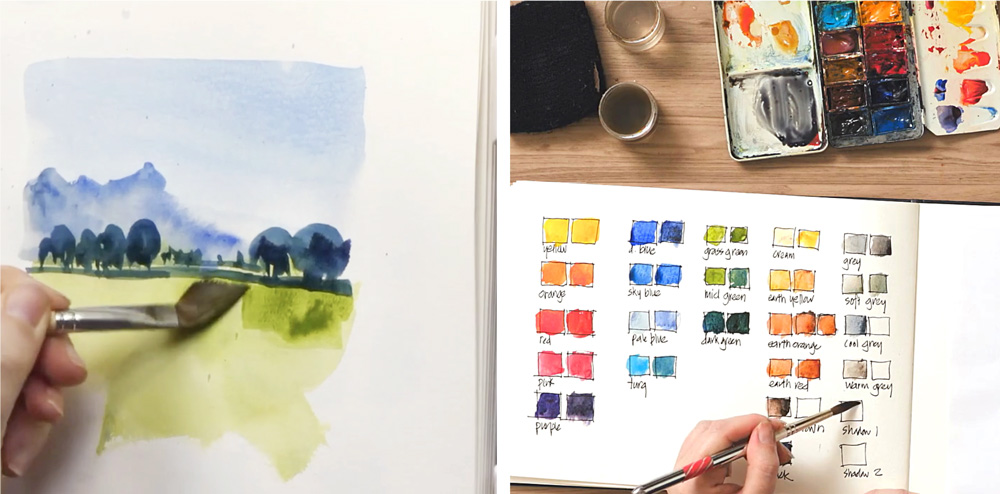



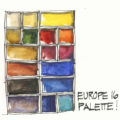
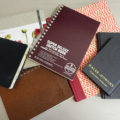

1 Comment
This sounds so much fun and so well thought out; can’t wait to start …
Liz, how many hours do you recommend spending per week on the course? I ask because, like many people, I help care for an elderly relative and have to map out my free time carefully. Gill
NEWSLETTER
Subscribe for first notification of workshop + online classes and more.